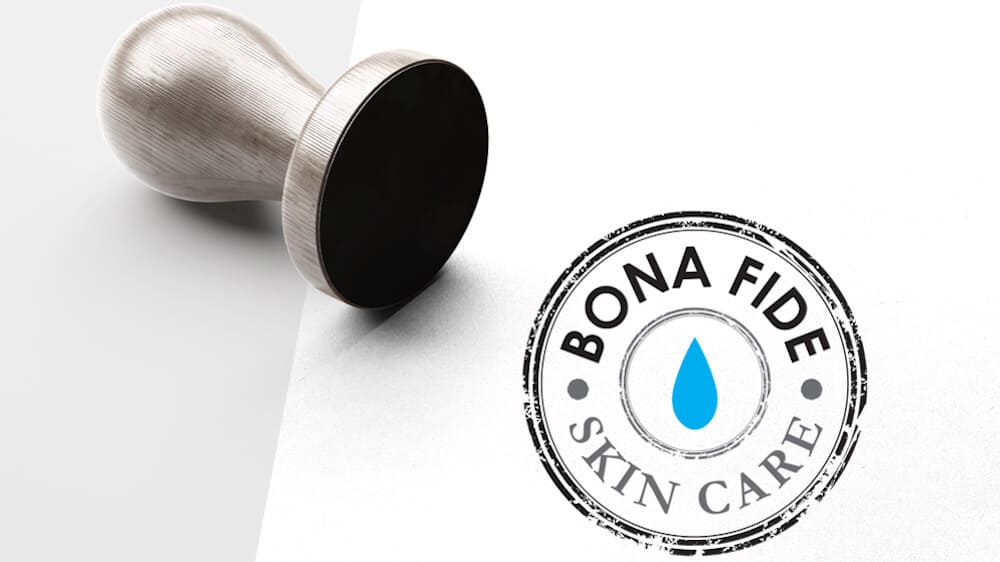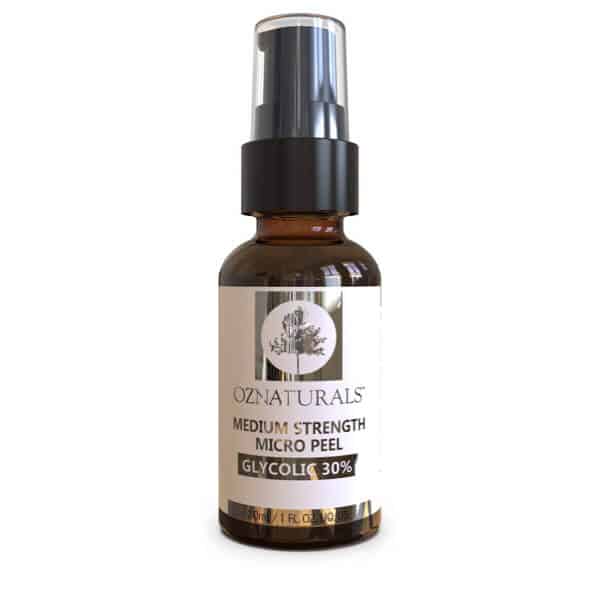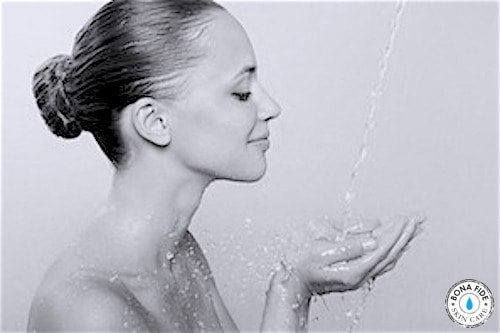How to do a Glycolic Acid Peel at Home
This article covers everything you need to know about how to do a safe and effective glycolic acid peel at home.

Using glycolic acid in a higher percentage (aka a peel) can clear up blocked pores and pigmentation, help with fine lines, and brighten your complexion. It really is easy to do light, safe glycolic chemical peels at home—so follow this guide and enjoy the benefits!
*Quick note: this is a guide only. Please consult a professional if you are unsure.
What is Glycolic Acid and Why is it so Good for Skin?
Derived from sugar cane, glycolic acid has the smallest molecule of the Alpha Hydroxy Acid group (AHA’s). It dissolves the “glue” that binds dead cells together on the surface of skin, sloughing off these dead cells to provide an even exfoliation.
See this page for more about glycolic acid.
Benefits of Using a Glycolic Acid Peel
If this benefit list doesn’t motivate you to start an at-home peel treatment plan, we’re not sure what will!
- Provides an even, deep exfoliation
- Helps clear blocked pores and blackheads
- Reduces pigmentation
- Stimulates skin cells to increase turnover for a renewed, healthier looking complexion
- This also helps decrease fine lines and other anti-aging concerns
- Glycolic acid has a cumulative effect. With frequent use can stimulate collagen and greatly improve skins texture
Note: To start with something easier and safer, that will help your skin build tolerance to higher percentages, you can use a low percentage of glycolic acid on a daily basis.
How to Do a Glycolic Acid Peel at Home
Follow these step by step instructions, which include a suggested treatment plan you can follow and recommended products.
Of course, please be sure to follow any specific instructions that come with your product.
Where to Start? Peel Concentration and pH
An effective glycolic facial peel should be between 30 – 50% concentration.
Anything higher is too strong, do not use 70%. This is a level best left to a professional, if at all. You will get the same benefits with lighter facial peels if you do them safely and consistently.
What about pH?
Normal pH of skin is about 5.5, so slightly acidic. Glycolic peels ability to bring skin back to its optimal pH is one reason why they are so beneficial.
Ideal pH for a peel: between 2-3.
Higher and the effect is neutralized. Lower and it’s the equivalent of battery acid!
What does all this mean for you?
It is best to start with a concentration of 30% with a pH of 2-3.
Here is a beginning schedule at this level. This is best for people who have not done glycolic peels before or have sensitive skin:
- For the first 2 – 3 treatments apply the peel for 1 minute
- Increase by 2minute increments each time until you reach 5 minutes maximum
- Once you have done two or three 30% peel treatments at 5 minutes increase to 40%
- Repeat steps 1 – 2 and build up to 50%
- Important: depending on your skin this build up might not be necessary. A lot of people have perfect results from staying at the lower dose. So take your time, keep an eye on your skin, be confident that glycolic acid does work even if you need to stay with a “lower” percentage.
What You’ll Need
You’ll need some equipment to perform your peel. Get yourself ready and organized with the list below.
- A simple, gentle cleanser
- Rubbing alcohol or skin prep (you can use the little pads that come in first aid kits). This thoroughly dries the skin and removes surface oils to allow the peel to work effectively
- Glycolic acid peel 30%
- A small glass bowl to apply the product or a normal drinking glass works fine
- A fan brush or gauze/cotton pad
- 1/2 cup baking soda mixed with 2cups water to neutralize the peel at the end. You can simply mix this up in your sink.
- There are specific neutralizers like this one, but baking soda and water is just as good. Put a soft washcloth or a bunch of cotton pads by the bowl or sink ready to use
- Vaseline to protect eyebrows, lip area and nostrils.
- A heavy emollient moisturizer. This is important after a peel which provides a deep exfoliation and removes the surface layer of skin cells. Those new exposed cells now need moisture and protection.
- A timer/clock
How to do a Glycolic Acid Peel Step-by-Step
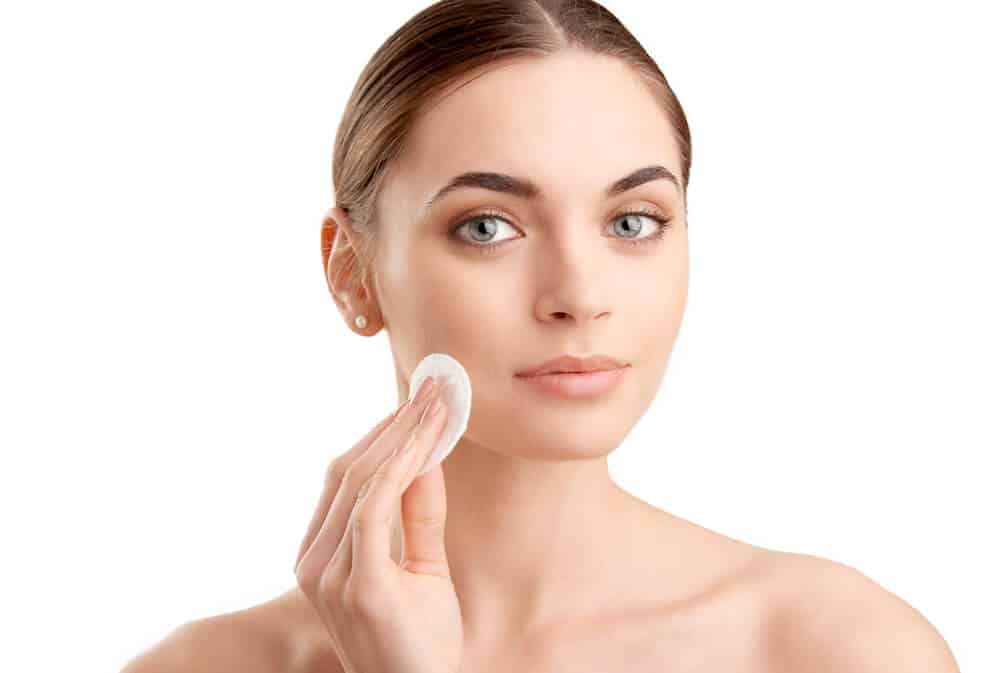
- Cleanse and dry skin
- Apply rubbing alcohol as you would a toner and allow to air dry completely. Do not worry about this drying out your skin, this is exactly what you want it to do so the peel can work its magic
- Make sure you have the baking soda solution ready beside you or in the sink
- Apply Vaseline to eyebrows, lip area and nostrils
- Pour a small amount of glycolic facial peel into the glass bowl
- Using the fan brush apply to skin quickly and carefully. Start on the forehead, move down the nose and chin then out to cheeks
- Applying with a gauze pad works well, just make sure you wear gloves and squeeze it to prevent drips
- Apply evenly in one layer (but don’t worry about being too fussy), the acid will start working straight away
- Avoid the eye, lip and neck area. They don’t have as many oil glands as the rest of the face so can react more severely
- Start timing as soon as you apply that first stroke
- Be very careful to not get any in your eyes
- Avoid any broken skin or active breakouts
- Relax, and watch your skin in the mirror
What to Expect:
- Skin will tingle which is a good sign! It is normal to feel “bitey” but if it is painful or too uncomfortable neutralize straight away.
- Pink or redness particularly in more sensitive areas such as cheeks. Watch your skin in the mirror and if it becomes overly red or blotchy/motley, neutralize immediately.
- The tingling can subside after the first 30seconds. Don’t mistake this for it no longer working, if left on skin it will continue to provide an acid effect so stick to the timer.
- Once you begin neutralizing expect the sting to intensify briefly, but just continue as this quickly subsides.
How to Remove a Glycolic Acid Peel
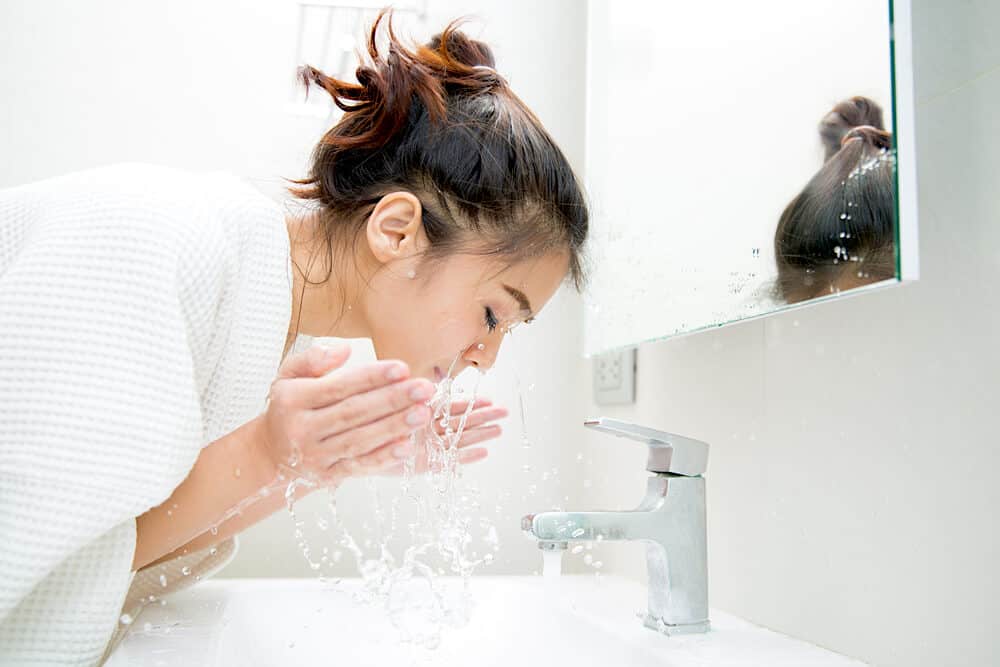
- Once the minute is up, apply the baking soda solution all over your face by splashing it and/or using a soft cloth
- Repeat for at least 1 minute until you are confident you’ve applied it thoroughly. Remember it will sting more briefly at the start
- Rinse skin with water – If it feels hot keep splashing until it has cooled down and more comfortable
- Pat dry skin and apply a very generous layer of moisturizer/oil
- If you have time apply a soothing, nourishing mask after removing. This is what happens in professional facials as the skin is perfectly primed to absorb all that moisturizing goodness
- It’s best to do this in the evening so you won’t be outside and exposed afterwards
- Very important to wear a high spf sunscreen and preferable to avoid the sun altogether for a few days afterwards
Expectations and Aftercare
- Skin might be dry for a few days as the top layer as been removed. Keep applying that heavy moisturizer. Coconut oil also works well
- Do not exfoliate for at least a week. In fact, you won’t need to at all while doing chemical peels at home, they are the most effective exfoliation by themselves and anything else will be very irritating
- Skin will probably be very sensitive and perhaps a bit pink and shiny for a few days. Avoid excessive heat or harsh conditions
- it is important to wear a high SPF sunscreen every day. The new layers won’t take kindly to sun exposure, which can result in a more severe sunburn and pigmentation
- There may be slight flaking. Just keep slathering on the moisturizer – don’t pick it!
Your Treatment Plan: how often and maintenance
You will see benefits after your first glycolic facial peel at home. A smoother, fresher looking complexion, and a nice glow for a few days.
Long term benefits will need at least 4 treatments to show. In this time cell turnover will increase and the surface of skin will be healthier.
How often should you perform glycolic acid peeling at home?
- once every 2-3 weeks is ideal – not too close together but enough to get cumulative effects
Once you’ve done a few peels at this rate and are seeing good results, a maintenance treatment once every 1 or 2 months is all that’s needed. This will avoid over-peeling effects such as thinning or sensitivity.
It really is better to take the side of caution – don’t mistake the instant glow that peels give you as a reason to do them stronger and more often.
You know your skin best, and once you’ve done a couple will be able to adjust strength and timing by look and feel.
Enjoy the clearing and rejuvenating benefits of a glycolic facial peel!
Once you’ve incorporated a regular acid peel into your routine, you won’t look back and everyone will wonder where that glow is coming from!
